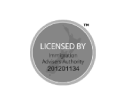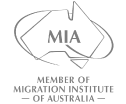So, you’re dreaming of making the move Down Under? Australia, with its thriving economy, high quality of life, and stunning landscapes, is a magnet for skilled migrants. But navigating the visa application process can be a minefield. Mistakes happen, and unfortunately, they can lead to rejection. This article will explore the seven most common reasons why Australian skilled visas are rejected and provide actionable steps to ensure your application shines. Let’s make your Australian dream a reality, not just a wish.
1. Insufficient Points Score: Are You Really Meeting the Threshold?
Australia’s skilled migration program operates on a points-based system. You need to demonstrate that you possess the skills and attributes that Australia values. But many applicants fall short of the required points threshold, leading to rejection.
- Understanding the Points Test: The Department of Home Affairs clearly outlines how points are awarded for factors like age, education, work experience, English language proficiency, and more. Don’t just assume you qualify; meticulously calculate your points using the official criteria.
- Boosting Your Score: Unsure if you meet the threshold? Explore strategies to improve your score. This may involve:
- Improving your English language test scores: Retake the IELTS or PTE to aim for a higher band score. Even a small improvement can significantly increase your points. Need practice? Find some on the IELTS official website.
- Gaining more work experience: Consider working in your field for a few more months to reach the next experience bracket. You could also consider gaining skills in a specific, high-demand occupation as identified by the Australian government’s skilled occupation list.
- Completing a relevant qualification: If possible, pursue further education to enhance your qualifications and skills.
- Seeking nomination by a state or territory government: State nomination can provide valuable extra points and may also increase your chances of being invited to apply. Learn more about state nomination on each state’s official website, such as Live in Melbourne.
2. Inaccurate or Incomplete Skills Assessment: The Foundation of Your Application
A positive skills assessment is a cornerstone of most skilled visa applications. This assessment verifies that your qualifications and experience meet Australian standards for your nominated occupation. Submitting an inaccurate or incomplete application can result in a negative assessment and a visa rejection.
- Choosing the Right Assessing Authority: Different occupations have different assessing authorities. Ensure you select the correct one for your nominated occupation. A comprehensive list of assessing authorities can be found on the Department of Home Affairs website.
- Providing All Required Documentation: Carefully review the assessing authority’s requirements and provide all necessary documents, including certified copies of your qualifications, detailed employment references, and any other supporting evidence.
- Addressing Potential Discrepancies: If you anticipate any potential issues with your skills assessment, address them proactively. For example, if your qualifications are not directly equivalent to Australian standards, provide evidence of relevant work experience or professional development to demonstrate your competency.
3. Insufficient English Language Proficiency: Clear Communication is Key
English language proficiency is crucial for successful integration into Australian society and the workforce. Failing to demonstrate the required level of English language ability is a common reason for visa rejection.
- Meeting the Minimum Requirements: The Department of Home Affairs specifies the minimum English language test scores required for each visa subclass. Ensure you meet or exceed these requirements.
- Choosing the Right Test: You can demonstrate your English proficiency through various tests, including IELTS, PTE, TOEFL iBT, and OET. Choose the test that you feel most comfortable with. Be absolutely certain that your chosen test is accepted for your visa subclass.
- Preparing Thoroughly: Don’t underestimate the importance of test preparation. Utilize online resources, practice tests, and consider enrolling in a preparation course to maximize your chances of success.
- Understanding Test Validity: Ensure your test results are valid at the time of application. English test results are valid for a limited period, typically three years. For further information, consult the IELTS website or the PTE Academic website.
4. Health and Character Issues: Maintaining Australia’s Community Standards
Australia prioritizes the health and character of its migrants. Applicants with significant health issues or a criminal history may be deemed ineligible for a visa.
- Meeting Health Requirements: You may be required to undergo a medical examination as part of your visa application. This examination assesses your overall health and identifies any potential health conditions that could pose a risk to public health or safety. Be honest and upfront about any pre-existing conditions. Learn more about Australian migration health requirements from Bupa Medical Visa Services.
- Disclosing Criminal History: You must declare any past criminal convictions, even if they occurred many years ago. Failure to do so can result in visa refusal. The Australian Federal Police provides information on obtaining a police clearance certificate, which is often required as part of the visa application process.
- Understanding the “Character Test”: The Australian government will assess your character based on your past conduct and associations. If you have a history of criminal activity, dishonesty, or association with criminal organizations, your visa application may be refused.
5. Providing False or Misleading Information: Honesty is the Best Policy
Attempting to deceive the Department of Home Affairs by providing false or misleading information is a serious offense that can have dire consequences, including visa refusal and a ban on applying for future visas.
- Double-Checking All Information: Before submitting your application, meticulously review all the information you have provided to ensure its accuracy and completeness.
- Providing Genuine Documents: Only submit genuine documents that accurately reflect your qualifications, experience, and other relevant information. Do not attempt to forge or alter any documents.
- Declaring All Relevant Information: Be transparent and honest about all aspects of your application, including any potential issues or concerns. Withholding information can be just as damaging as providing false information.
6. Not Meeting the “Genuine Temporary Entrant” (GTE) Requirement (If Applicable): Are You Really Here to Study?
While the GTE requirement primarily applies to student visas, it’s worth mentioning as immigration authorities want to ensure applicants are genuinely intending to stay in Australia temporarily for the purpose of studying.
- Demonstrating Genuine Intention: If you’re applying for a student visa, you must demonstrate that your primary intention is to study in Australia and that you intend to return to your home country upon completion of your studies.
- Providing Evidence of Ties to Your Home Country: Provide evidence of strong ties to your home country, such as family responsibilities, property ownership, or employment prospects.
- Explaining Your Study Plans: Clearly articulate your reasons for choosing to study in Australia and how your chosen course of study will benefit your future career aspirations.
7. Choosing the Wrong Visa Subclass: Tailoring Your Application to Your Circumstances
Selecting the appropriate visa subclass is paramount. Applying for a visa that doesn’t align with your skills, qualifications, and circumstances is a surefire way to get rejected.
- Understanding the Different Visa Options: Australia offers a range of skilled migration visas, each with its own eligibility criteria and requirements. Research the different visa options carefully to determine which one is the best fit for your situation. Explore the skilled visa options on the Australian Department of Home Affairs website.
- Seeking Professional Advice: If you’re unsure which visa subclass is right for you, consider seeking advice from a registered migration agent. A migration agent can assess your situation and provide expert guidance on the visa application process. You can find a registered migration agent through the Migration Agents Registration Authority (MARA).
Conclusion: A Well-Prepared Application is Your Best Bet
Migrating to Australia is a significant undertaking, and a visa rejection can be a major setback. By understanding the common reasons for visa refusal and taking proactive steps to avoid them, you can significantly increase your chances of success. Remember, thorough preparation, meticulous attention to detail, and honesty are your greatest allies in navigating the Australian skilled visa application process. Good luck, and may your Australian dream become a reality!










